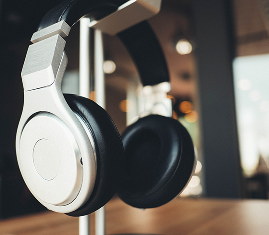You’re about to embark on a journey that takes you back in time to an era when music was experienced in a raw and authentic way. In this article titled “Vinyl Revival: The Allure And Authenticity Of Analog Sound,” you’ll discover the resurgence of vinyl records and the undeniable charm they bring to the music world. Get ready to explore the rich sound, tactile experience, and emotional connection that vinyl enthusiasts all over the globe are rediscovering. So please sit back, relax, and delve into vinyl records’ fascinating world.
Understanding the Vinyl Revival
In the digital age, where music is predominantly consumed through streaming services and digital downloads, there has been a surprising resurgence in the popularity of vinyl records. This phenomenon, the vinyl revival, has sparked curiosity and interest among music lovers and audiophiles. While the reasons behind this resurgence are complex and multi-faceted, several key factors have contributed to the rebirth of vinyl.
The resurgence of vinyl in the digital age
The rapid advancement of technology in the music industry has paved the way for convenient and accessible forms of music consumption. However, this ease and convenience have come at a cost. Many music enthusiasts feel that the digital experience lacks the tangible and immersive qualities that made vinyl records so beloved in the past. Vinyl revival can be seen as a rebellion against the intangible nature of digital music.
Critical factors in the rebirth of vinyl
One significant factor in the resurgence of vinyl is the allure of the overall vinyl experience. From the tactile experience of handling vinyl records to the aesthetic appeal of large album artwork, vinyl offers a nostalgic and authentic experience that digital formats cannot replicate. Additionally, the perceived superiority of analog sound, commonly referred to as the “warmth” of vinyl, has played a crucial role in attracting both seasoned audiophiles and curious music enthusiasts to embrace vinyl records once again.
Demographics of the Vinyl Comeback
While the vinyl revival has garnered attention from various demographics, certain groups have been particularly drawn to the charm of vinyl records. Collectors, music enthusiasts seeking a more immersive experience, and those with a penchant for nostalgia are among the primary demographics fueling the vinyl comeback. Additionally, younger generations, who may not have experienced vinyl records firsthand, are now discovering the unique qualities of vinyl and contributing to its growing popularity.
The Allure of Vinyl Records
Vinyl records offer a multisensory experience that connects individuals to music in a way that digital formats cannot replicate. The allure of vinyl lies in the tactile experience of handling the record, the visual appeal of the large album artwork, and the ritual of playing a vinyl record.
The tactile experience of handling vinyl
Unlike digital music files, vinyl records require physical interaction. Carefully removing the paper from its sleeve, feeling the grooves beneath your fingertips, and gently placing it on the turntable creates a tangible connection to the music. This hands-on experience adds an element of intimacy and engagement that many find lacking in digital formats.
The aesthetic appeal of large album artwork
One of the most visually captivating aspects of vinyl records is the artwork. Vinyl’s larger canvas allows for expansive and detailed album covers, providing a visual representation that complements the music. The intricate details and vibrant visuals evoke a sense of nostalgia and add an artistic dimension to the listening experience.
The ritual of playing a vinyl record
Playing a vinyl record is a ritualistic experience that transports you back to when music was savored, not simply consumed. The deliberate process of carefully selecting a form, gently placing it on the turntable, and lowering the needle creates a sense of anticipation and builds a connection between the listener and the music. This ritualistic aspect of vinyl profoundly impacts the overall enjoyment and appreciation of the music.
Authenticity of Analog Sound
A prominent reason for the vinyl revival is the perceived superiority of analog sound over digital. Listeners often attribute a sense of warmth to vinyl records, valuing the unique characteristics and imperfections that contribute to their authentic sound. Nostalgic sentiments surrounding tangible music media also play a significant role in the preference for analog.
Perceived superiority of analog over digital
Many audiophiles argue that analog recordings capture sound more faithfully and naturally. The continuous waveform of analog recordings, as opposed to the discrete samples of digital files, is believed to result in a more accurate representation of the original sound. This perceived superiority of analog sound quality has fueled the vinyl revival as more and more individuals seek a more authentic and immersive listening experience.
Subjective ‘warmth’ of records vs. CDs and streaming
A widespread perception among vinyl enthusiasts is that vinyl records offer a warmer and more organic sound than digital formats such as CDs and streaming. This warmth is often attributed to various factors, including the inherent limitations of vinyl and the specific mastering techniques used during the vinyl production process. The subjectivity of this perceived warmth adds to the allure of vinyl, as it creates a distinct and highly personal listening experience.
Nostalgia and the return to tangible music media
In an era where intangible digital music has become the norm, many individuals yearn for a physical connection to their music. Vinyl records offer a tangible and nostalgic experience, allowing listeners to engage with music more personally. The act of collecting, handling, and playing vinyl records carries an emotional weight, evoking memories and creating a sense of nostalgia for a bygone era.
Technical Nuances of Vinyl Sound
Beyond the perceived superiority and authenticity of analog sound, technical nuances contribute to the unique sound of vinyl records. The science behind vinyl’s sound, the imperfections that add character, and the role of the turntable in sound reproduction all contribute to the distinct audio experience of vinyl.
The science behind vinyl’s unique sound
Vinyl records produce sound through a physical process involving grooves and a stylus. As the stylus moves through the tracks, it amplifies an electrical current and reproduces as sound. This material nature of vinyl sound production results in a distinct audio quality that is both captivating and immersive.
The imperfections that add character
Vinyl records are not without their flaws. Surface noise, pops, and crackles are often perceived as imperfections that add character and depth to the music. These imperfections arise from various factors, including the quality of the vinyl pressing, the condition of the record, and the playback equipment. While some may view these imperfections as drawbacks, others argue that they contribute to the unique and authentic experience of listening to vinyl.
The role of the turntable in sound reproduction
The turntable is critical in reproducing the audio stored on vinyl records. Its precise engineering and careful calibration are essential in extracting the nuances and subtleties encoded in the grooves. Factors such as the quality of the turntable, the cartridge, and the stylus all play a role in determining the overall sound quality and fidelity of the playback.
Modern Bands and Vinyl
Contrary to popular belief, vinyl records are not confined to nostalgia. Many contemporary artists have recently embraced vinyl as a medium for releasing their music. This vinyl resurgence has significantly impacted the music industry and has even influenced the live music scene.
Contemporary artists releasing vinyl
Despite the dominance of digital music, many contemporary artists recognize the value of vinyl records. From established musicians to emerging bands, artists across various genres have embraced vinyl as a physical representation of their music. Releasing albums and singles on vinyl appeals to collectors and creates a unique and memorable connection between the artist and their fans.
Impact of vinyl sales on the music industry
The resurgence of vinyl has had a profound impact on the music industry as a whole. Vinyl sales have been steadily growing year after year, representing a significant source of revenue for artists, record labels, and retailers. The vinyl revival has created new opportunities for artists to connect with their fans and has sparked a renewed interest in physical music media.
Vinyl and the live music scene
Vinyl’s popularity extends beyond the realm of recorded music. Many artists, particularly those hailing from the indie and alternative scenes, have embraced vinyl to promote their live performances. Vinyl records act as merchandise, providing fans with a physical memento of the concert experience. This symbiotic relationship between vinyl and the live music scene has revitalized the connection between artists and their audiences.
Collecting Vinyl Records
As vinyl continues to gain popularity, more and more individuals are delving into the world of record collecting. The renewed interest in record collecting stems from a desire for tangible music media and the thrill of building a personal vinyl collection. However, ordering vinyl records comes with its own set of challenges and considerations.
The renewed interest in record collecting
Vinyl records have once again become coveted collector’s items. The allure of owning physical music, the aesthetic appeal of vinyl, and the desire for a more immersive listening experience have all contributed to the renewed interest in record collecting. Collectors often derive pleasure from searching for rare and unique records and find joy in curating a collection that reflects their taste.
The appeal and challenges of vintage vinyl
Vintage vinyl holds a special place in the hearts of collectors. Whether it’s the nostalgia associated with older records or the belief that vintage pressings offer superior sound quality, collectors are often drawn to the allure of vintage vinyl. However, the appeal of vintage vinyl comes with challenges, including the potential for wear and damage, the scarcity of specific albums, and the need for careful maintenance.
How to start a vinyl collection
Starting a vinyl collection can be an exciting endeavor. The first step is to invest in a turntable and a reliable sound system. Next, determining your musical preferences and interests will help you curate a collection that reflects your taste. Building a vinyl collection takes time and patience, but it can become a rewarding and enjoyable hobby with careful research and exploration.
The Art of Vinyl Mastering
Vinyl mastering is an essential step in the production process that determines a vinyl record’s overall sound quality and fidelity. The importance of quality in vinyl production, the role of mastering engineers, and the journey from raw recording to pressed vinyl all contribute to the artistry of vinyl mastering.
The importance of quality in vinyl production
Producing high-quality vinyl records requires attention to detail and understanding of the medium’s technical nuances. From selecting high-quality vinyl material to ensuring accurate sound reproduction, every step in the production process contributes to the overall quality of the final product. Quality production ensures that vinyl records sound their best and deliver an immersive and authentic listening experience.
The role of mastering engineers in the Vinyl Revival
Mastering engineers play a crucial role in the vinyl revival by ensuring the music is optimized for the vinyl medium. Their expertise in audio engineering and understanding of the technical intricacies of vinyl reproduction allows them to shape the record’s sound, maximizing fidelity and enhancing the overall listening experience. Their attention to detail and commitment to preserving the integrity of the music is vital in the art of vinyl mastering.
From raw recording to pressed vinyl – the process
The journey from raw recording to a pressed vinyl record is a meticulous and multistep process. It begins with the raw recordings captured in the studio, followed by the mixing and mastering stages. Once the audio is deemed ready for vinyl production, a lacquer disc is created and used to make a metal stamp, which is then used to press the vinyl records. Each step in this process requires precision and expertise to ensure that the final product meets the highest quality standards.
The Digital-to-Analog Conversion Process
Balancing modern recording techniques with analog playback is essential in the vinyl revival. Understanding the process of digital-to-analog conversion and why some audiophiles prefer vinyl to digital formats sheds light on the enduring appeal of vinyl records.
Balancing modern recording techniques with analog playback
The rise of digital recording techniques has allowed for greater convenience and flexibility in music production. However, when it comes to vinyl records, careful consideration must be given to how digital recordings are converted to analog for playback. The delicate balance lies in preserving the nuances of the original analog sound during the digital recording process and ensuring that the subsequent vinyl pressing retains the warmth and authenticity that audiophiles seek.
Understanding the process of digital-to-analog conversion
Digital-to-analog conversion is a critical step in preparing digital recordings for vinyl production. This process involves translating the discrete digital information into an analog waveform that can be engraved onto the vinyl record. To ensure faithful sound reproduction, specialized equipment, and techniques are employed to capture and recreate the unique qualities of analog sound during this conversion process.
Why some audiophiles prefer vinyl to digital formats
Audiophiles, enthusiasts dedicated to achieving the highest fidelity sound reproduction, often prefer vinyl records over digital formats. They believe that vinyl offers a more accurate and authentic representation of the original sound due to the continuous waveform nature of analog recordings. The imperfections and unique characteristics of vinyl further contribute to the appeal for those seeking an immersive and organic listening experience.
Vinyl vs. Other Music Formats
A comparison of vinyl records with other music formats, such as CDs and streaming platforms, reveals contrasting qualities in sound quality, durability, and overall cost. Each design has its strengths and limitations, appealing to different listeners based on their preferences and priorities.
Comparing sound quality across formats
Regarding sound quality, vinyl records and CDs are often considered superior to digital streaming platforms. With their analog sound reproduction, Vinyl records are believed to offer a warmer and more authentic listening experience. With their lossless audio quality, CDs provide a faithful representation of the original recording. In contrast, streaming platforms prioritize convenience over sound quality, often compressing audio files to minimize file size.
Durability and lifespan: vinyl vs. CDs and streaming
Vinyl records have long been known for their durability and longevity. Properly cared for, vinyl records can last for several decades, further fueling the appeal of record collecting. While more susceptible to scratches and disc rot, CDs also have a decent lifespan if handled with care. On the other hand, streaming platforms prioritize access and convenience over physical media, highlighting the temporal nature of digital music.
The cost of maintaining and enjoying a vinyl collection
Owning and maintaining a vinyl collection can be a significant investment. The cost of purchasing new vinyl records, acquiring a quality turntable and sound system, and maintaining proper storage and maintenance can add up over time. In contrast, CDs are generally more affordable, and streaming platforms offer a flexible subscription model that appeals to budget-conscious music enthusiasts. The cost of enjoying vinyl records goes beyond monetary value, as many collectors find immense joy and satisfaction in curating and listening to their vinyl collection.
The Future of Vinyl
As the vinyl revival continues to gain momentum, several trends and innovations indicate that vinyl’s resurgence is not a fad but a lasting shift in music consumption. From technological advancements to the impact on the music industry, vinyl is poised to shape the future of music consumption.
Trends indicating continued growth of vinyl
The sustained growth of vinyl sales over the past decade strongly indicates its enduring popularity. The increased production and availability of vinyl records across various genres, including new releases and reissues, reflect a growing demand for physical music media. Furthermore, younger generations’ continued engagement and interest in vinyl bode well for the format’s future.
Innovations in vinyl technology
Technological advancements have paved the way for innovations in vinyl-related products and experiences. From high-quality turntables and cartridges to improved vinyl pressing techniques, these innovations aim to enhance the vinyl listening experience and cater to the demands of audiophiles and collectors. Additionally, integrating digital technologies with vinyl, such as including digital download codes with vinyl purchases, bridges the gap between analog and digital music consumption.
How vinyl could shape the future of music consumption
Vinyl’s resurgence has already significantly impacted the music industry, reinvigorating physical music sales and retail spaces. The continued growth of vinyl presents opportunities for artists, record labels, and retailers to cater to music enthusiasts’ diverse needs and preferences. Additionally, the vinyl revival has sparked a renewed appreciation for the artistry and craftsmanship of music production, encouraging a more intentional and immersive approach to music consumption.
In conclusion, the vinyl revival is not just a passing trend but a testament to analog sound’s enduring allure and authenticity. The tactile experience of handling vinyl, the aesthetic appeal of album artwork, and the ritual of playing a vinyl record all contribute to the distinct charm of vinyl records. Moreover, the perceived superiority of analog sound, the technical nuances of vinyl, and the unique qualities of vinyl mastering further elevate the appeal of vinyl in the digital age. With the continued growth of vinyl sales, the involvement of contemporary artists, and the advancements in vinyl technology, vinyl is poised to shape the future of music consumption and provide an immersive and authentic listening experience for years to come. a











